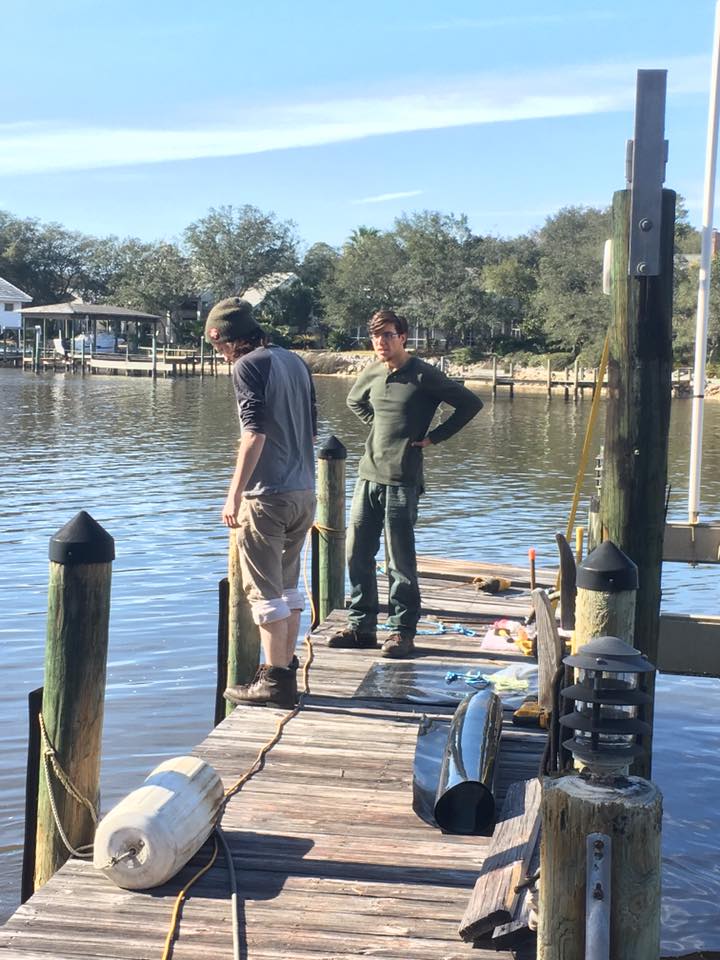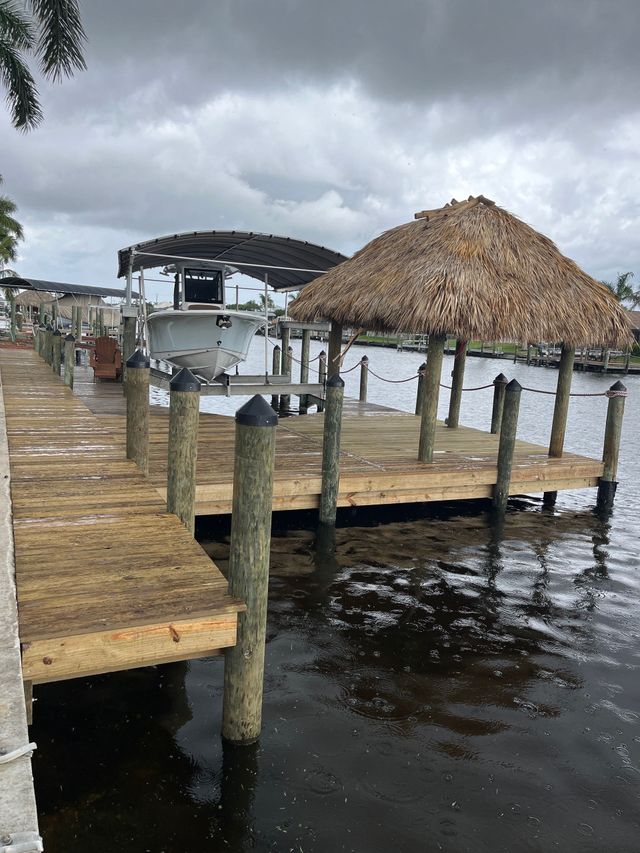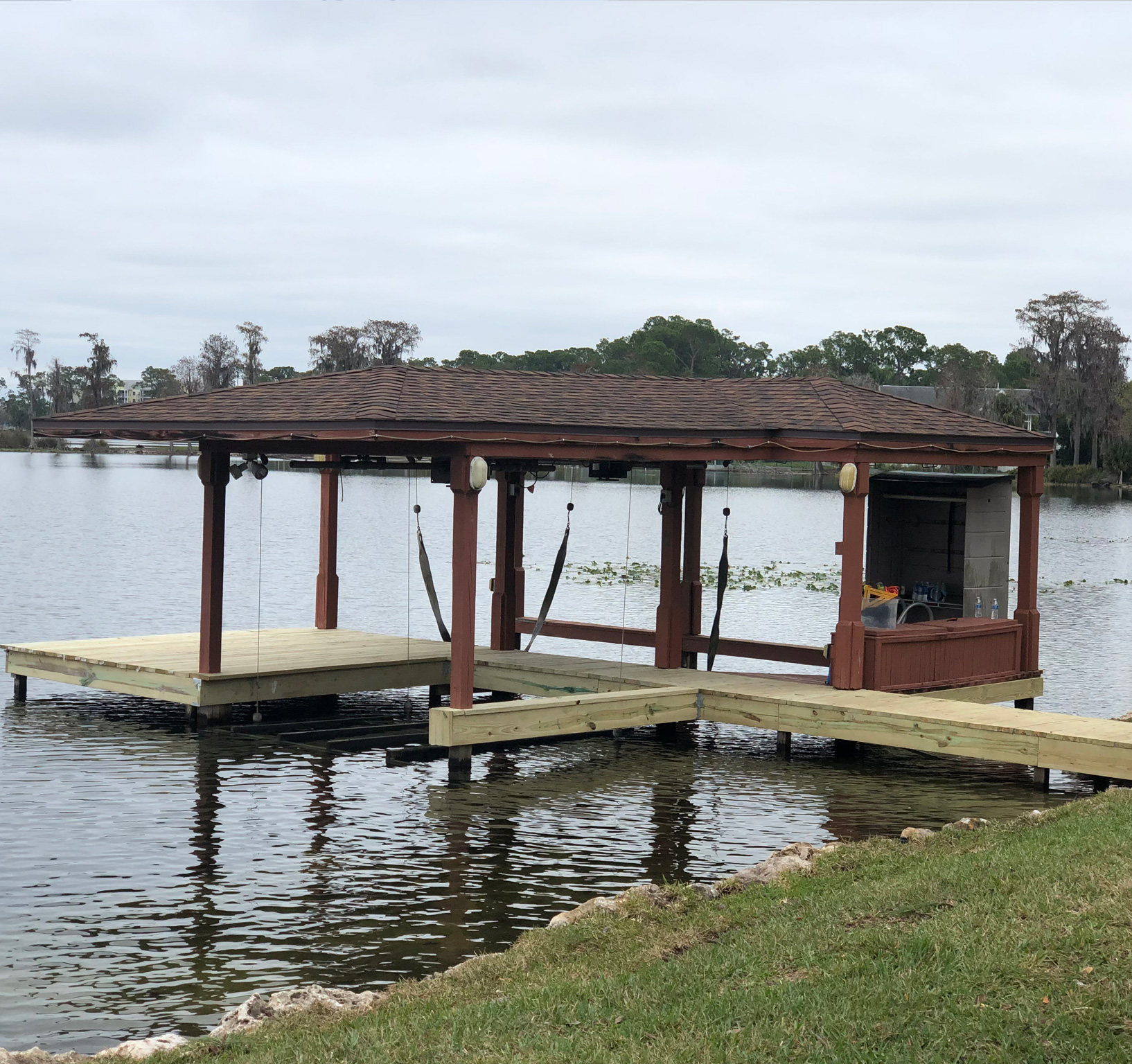Reliable Dock Repair Work Techniques: Making Certain Architectural Honesty
Ensuring the architectural integrity of anchors through effective repair service techniques is paramount for the long life and safety of aquatic facilities. Ultimately, choosing the right repair service materials, such as corrosion-resistant alloys and composite products, is crucial for resilience.
Assessing Dock Damages
Analyzing dock damages is a critical initial step in guaranteeing the architectural stability and security of any type of docking center. Secret aspects to examine consist of the dock's foundation, pilings, outdoor decking, and hardware (Dock Repairs).
Architectural engineers or certified inspectors commonly do these assessments making use of specialized devices and strategies. For example, underwater examinations might utilize finder equipment or from another location ran vehicles (ROVs) to find submerged damages. Above water, aesthetic examinations are enhanced by utilizing moisture meters and other diagnostic devices to discover underlying issues not quickly noticeable to the naked eye.

Picking Repair Work Materials
Choosing the suitable repair work materials is an essential step in the dock reconstruction procedure, one that directly influences the durability and efficiency of the fixed framework. Material option have to be driven by aspects such as ecological problems, load-bearing requirements, and compatibility with existing dock parts. Wood is a conventional choice for anchors due to its natural durability and visual appeal. Picking the right kind of timber, such as pressure-treated lumber or naturally rot-resistant species like cedar or teak, is important to withstand water settings.
In addition to wood, composite materials are significantly popular as a result of their resilience and reduced maintenance requirements. Compounds, typically made from a mix of plastic and wood fibers, provide superb resistance to rot, insects, and UV damage. For steel docks, picking corrosion-resistant alloys such as galvanized steel or marine-grade light weight aluminum is necessary to protect against corrosion and ensure architectural integrity in saline water problems.
Epoxy resins and marine-grade sealers are vital for repairing fractures and securing joints, offering a water-proof barrier and improving the dock's overall toughness. By thoroughly selecting high-quality materials, dock fixings can accomplish lasting outcomes, consequently protecting against future destruction and making sure safe, reliable usage.
Architectural Support Strategies
Effective structural reinforcement strategies are essential in guaranteeing the security and long life of dock repairs. This technique is specifically effective for docks exposed to heavy lots or harsh ecological conditions.
One more essential technique is the application of fiber-reinforced polymers (FRP) These materials use high strength-to-weight proportions and excellent resistance to rust, making them optimal for reinforcing concrete or wood docks. FRP can be used in strips or sheets and bonded with epoxy resins to boost architectural honesty.
Bracing and anchoring systems likewise play a vital role in structural support. Cross-bracing, using metal or wooden beams, can counteract lateral pressures, reducing swaying and motion. Anchoring systems, such as helical piers or driven piles, offer a stable foundation by moving tons to deeper, more stable dirt layers.
Last but not least, the assimilation of load-distribution plates can assist disperse weight much more uniformly across the dock's surface area, minimizing localized stress factors. These techniques jointly make certain that docks continue to be secure and durable, capable of withstanding the roughness of their operational setting.
Advanced Repair Service Techniques

An additional innovative strategy entails undersea welding, which enables fixings to be performed without the demand to dewater the location. This technique is especially helpful for resolving architectural concerns in immersed dock parts, making certain marginal disruption to operations. Boosted welding techniques, coupled with robotic systems, provide accuracy and reliability, therefore expanding the life-span of the dock.
In addition, cathodic defense systems are applied to protect against deterioration in metallic dock structures. By utilizing sacrificial anodes or amazed present systems, these methods efficiently reduce the electrochemical processes that lead to material damage.
Finally, advanced surveillance modern technologies, such as structural health and wellness tracking (SHM) systems, offer real-time data on the condition of dock frameworks. These systems enable proactive upkeep and prompt interventions, ultimately guaranteeing the long-lasting architectural honesty of the dock.
Maintenance and Prevention
Upkeep and avoidance are essential ideas that underpin the longevity and safety and security of dock frameworks. Routine inspections are paramount, enabling early discovery of damage, prospective weak points, and ecological impacts. An aggressive method, involving regular checks for deterioration, rot, and structural changes, alleviates costly fixings and extends the dock's operational life.
Safety nets ought to consist of applying safety finishes to metal parts to defend against rust and making use of treated wood to withstand degeneration. Furthermore, making certain appropriate water drainage and ventilation can stop water accumulation, which is a typical source of architectural deterioration. Including quality materials and sticking to manufacturer guidelines during building and repair service stages also play vital duties in enhancing toughness.

Training personnel in dock maintenance ideal methods makes sure constant application of precautionary procedures. additional reading Leveraging technological advancements, such as drones for evaluations and sensors for real-time monitoring, can further enhance upkeep initiatives. By prioritizing maintenance and prevention, dock proprietors can make certain architectural stability, operational security, and economical administration over the dock's life expectancy.
Final Thought
In verdict, maintaining the structural integrity of aquatic centers necessitates extensive dock repair service techniques. Advanced repair methods, coupled with normal maintenance practices, ensure the dock stays secure and functional under diverse environmental problems.
Making certain the architectural integrity of anchors through efficient repair service strategies is critical for the longevity and safety and security of aquatic centers.Choosing the ideal repair work materials is an essential step in the dock remediation procedure, one that directly influences the durability and performance of the fixed framework.Efficient structural support strategies are vital in ensuring the stability and long life of dock repair work. By prioritizing maintenance and prevention, dock proprietors can make certain architectural honesty, functional security, and affordable administration over the dock's lifespan.
In conclusion, preserving the architectural honesty of marine centers requires extensive dock repair work techniques.